| So to Anchorage. We are
camped almost in the city centre next door to the railway and about 300
yards to the right of here. |  |
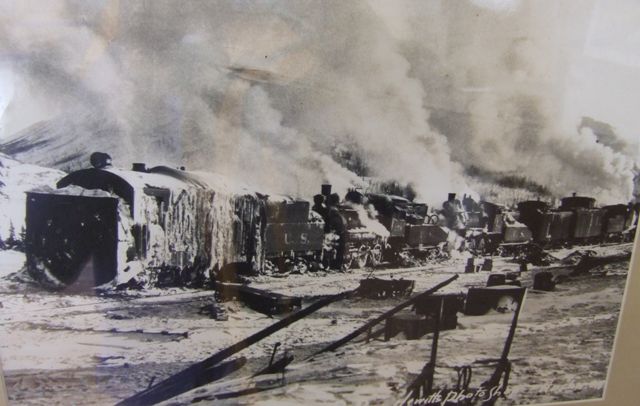 |
Inside the station are some photos, inevitably of snow clearing. Here we
have a rotary snowplough being pushed by six or seven locomotives. It must
have been quite a sight. |
| Alaska did not become a
state until 1959. This monument commemorates the event. Just opposite was a
huge outdoor market but it turned out to be mostly food and tourist stuff so
we didn't stay long. | 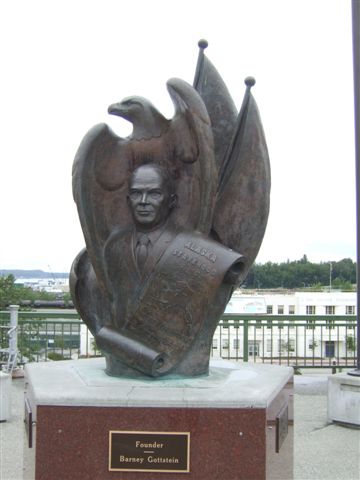 |
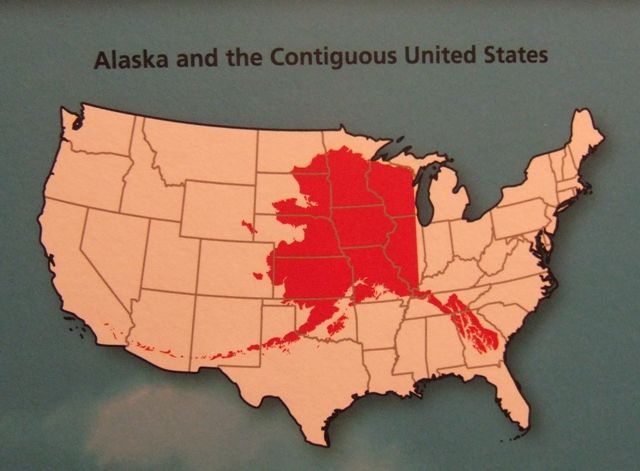 |
We went to the Anchorage museum and saw this interesting map showing Alaska
superimposed on the rest of the US. |
| There is a lot of artwork
some of which has details associated with it. This screen doesn't but is
colourful. |  |
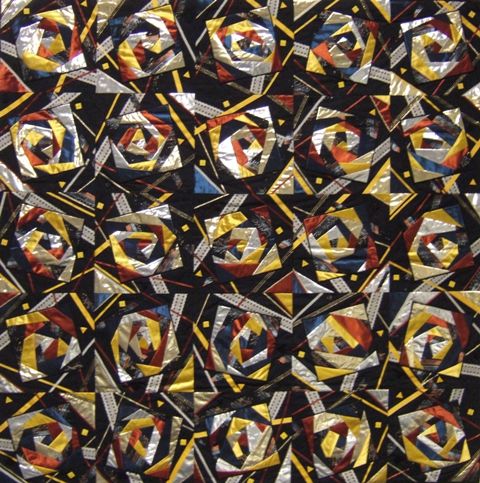 |
There are a number of quilts hung on the wall. This abstract one with its
shiny metallic sections is interesting. |
| A native style costume
but with inspiration from other cultures and using some non-traditional
materials. This was made in 2000 by Clarissa Rizal and is entitled 'Copper
Woman'. |  |
 |
Jan liked this table with its quirky leg. |
| I can admire art but I
don't pretend to understand it. |  |
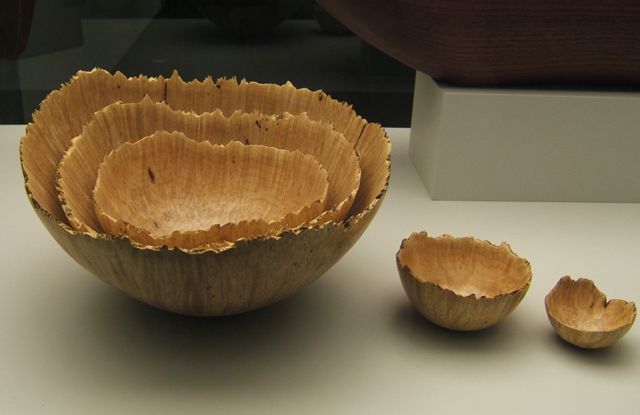 |
These nested bowls were all made from one maple burl in 2002 by Bill Bowers. |
| Each of these says
welcome in one of the 20 native languages in use in Alaska. It would have
been nice to know which language each is in and how they are pronounced. | 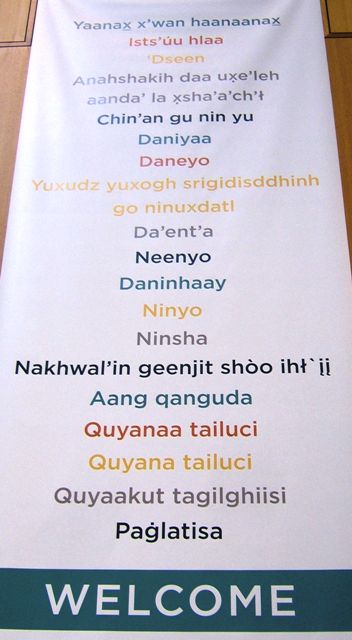 |
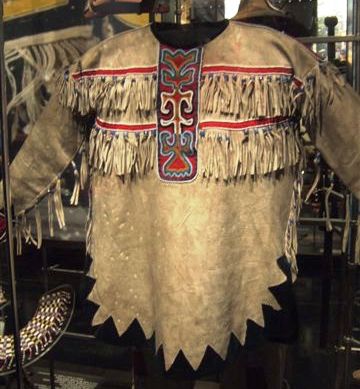 |
There is a gallery devoted to native culture (an offshoot of the
Smithsonian). It is rather dark and flash is prohibited to avoid damaging
the artefacts. This is Tlingit |
| This is Athabascan/Eyak.
The Athabascans inhabit a large area as far north as the Brooks Range, and
speak 11 different languages. The Eyak are a related group which lives in
the Copper River region and has a distinct language and customs. |  |
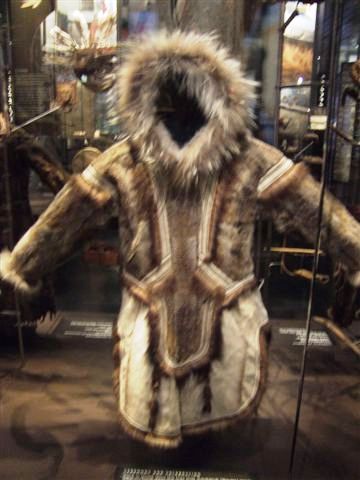 |
This is Yup'ik/Cup'ik. These are Eskimo peoples from the far north. They
have lived in the Kuskokwim Delta for at least 10,000 years. |
| This is Aleutian from the
islands. These groups have many Russian sounding names and most are members
of the Russian Orthodox church. They now live in the Eastern Islands, and
the Western Aleutians have largely been abandoned. |  |
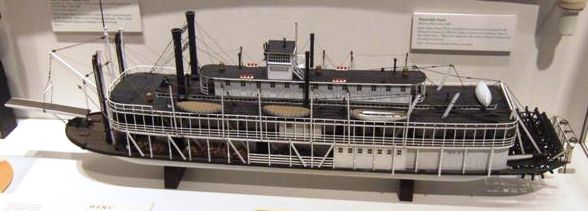 |
A model of the Alaska Commercial Company steam packet 'Susie'. Steamships
provided access to Alaska from 1838 to the 1900s. |
| The oak hulled ship 'The
Bear' was built in 1874 for whaling in Newfoundland. It later became a
government ship in the Bering Sea and a lifeline for the scattered
communities until 1934. | 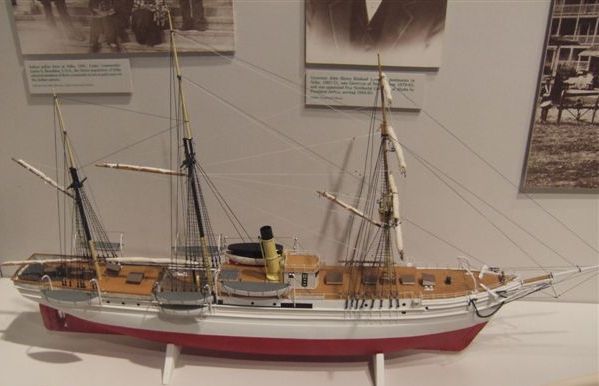 |
 |
A model of the whaling ship 'Contest'. It was one of 33 ships lost in the
disaster of 1871 when they were trapped by pack ice and crushed. The 1200
crew were rescued by the seven ships which escaped. |
| A display of canoes
outside a replica building of the period. | 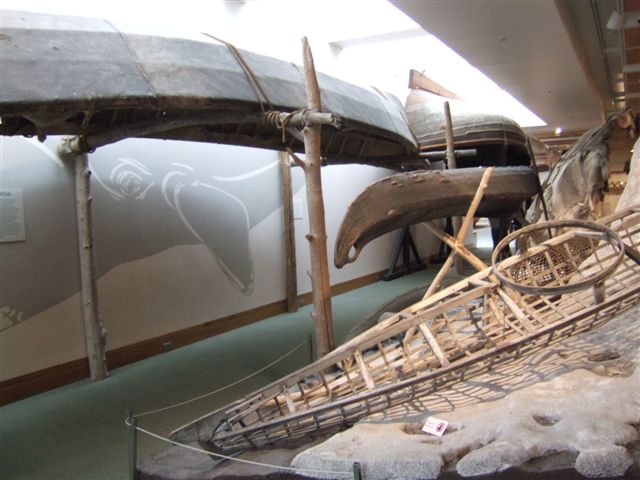 |
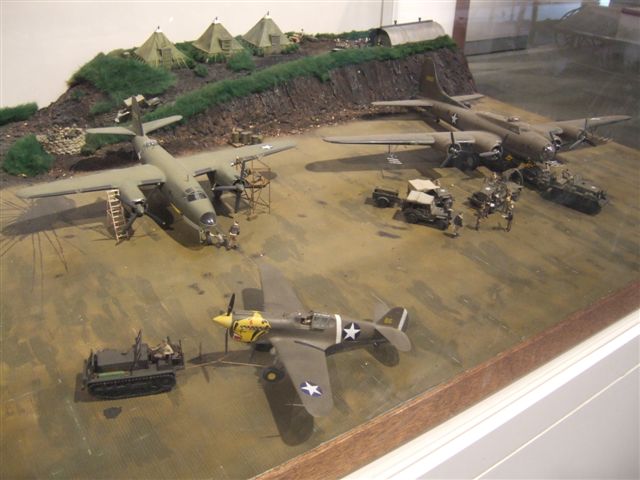 |
A reminder that there was a war in the Aleutians when the Japanese invaded
two of the western isles. Thousands of Americans were deployed in terrible
conditions and it led to the development of real access to Alaska. |
| A model of the railroad
at Anchorage in 1919. The railway to Fairbanks was not completed at this
time. |  |
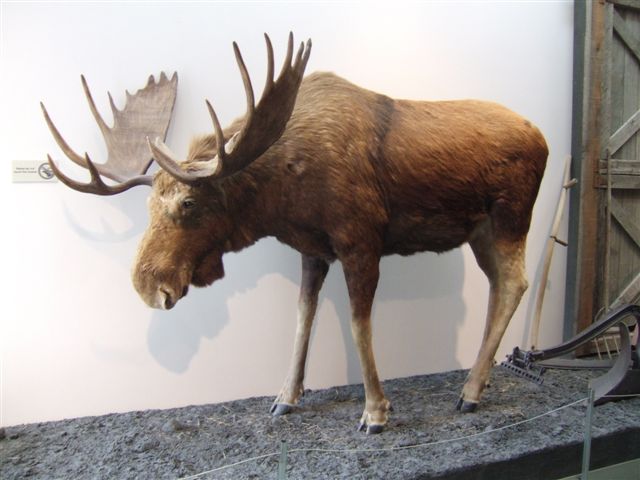 |
Since I have such difficulty finding live moose, we have to settle for
stuffed moose. |
| And stuffed musk ox. Jan
will not be pleased with this shot but it does show the size of the animal -
we thought it would be bigger. |  |
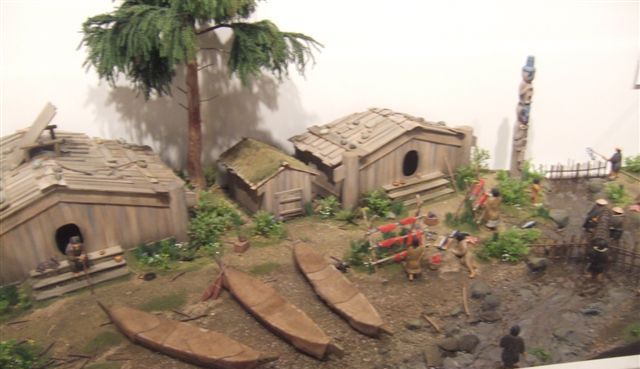 |
Models of the villages of the natives showing the subsistence way of life.
This would be Athapaskan. |
| Even today the Eskimoes
are allowed to catch whale. I don't have problems with that if this is how
they do it. | 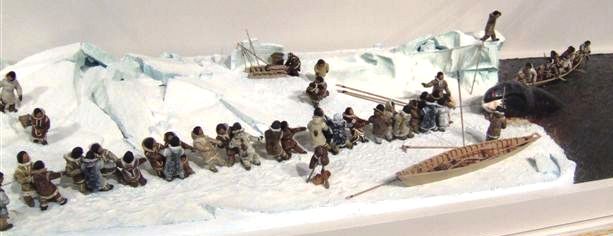 |
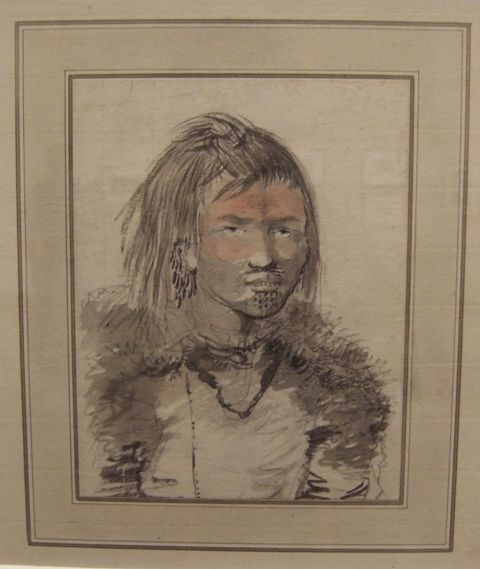 |
Having seen the museum part we exited via the art gallery with paintings and
drawings this time. This one caught my eye. It was a good likeness of the
girl in the photo next to it. |
| A train had returned to
the station. This is shorter so probably a train from Seward. |  |
|